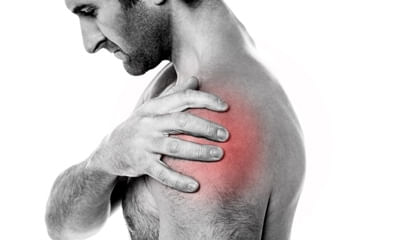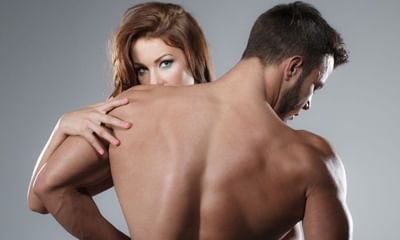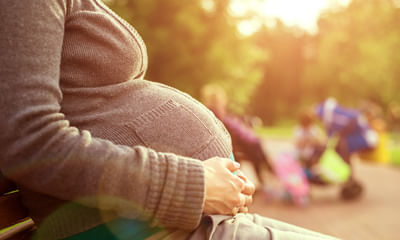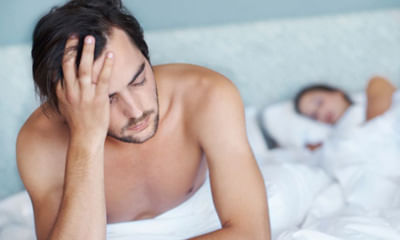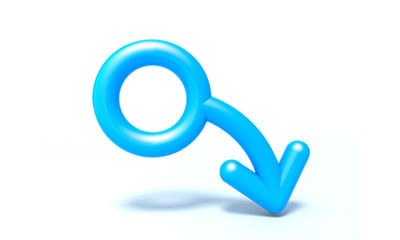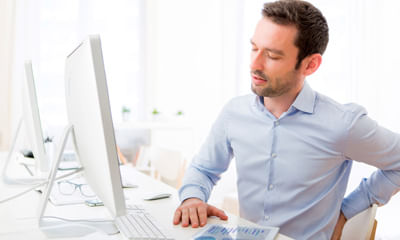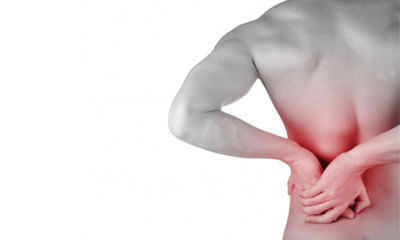Hand Practice Of Male
I am 24 year old male, I am having feet pain. I started feeling them from walking even 200 meter and then it keeps on in ...
Ask Free Question
I will tell you exercise for yours problem, flat foot that might trigger the pain always and however we treat that may not help. Hot water fermentation will help and that can be done by immersing the foot in hot water. Wear mcr chappals you need to have sound sleep for you to have good nourishment and also have good energy throughout the day. If not the bones strength, vitality will be lost and that will lead to poor metabolism. Change your life style and practice good habits.
Hello, I am male aged 23, I recently gave up on prone masturbation, and given a week gap to all the sexual activities, a ...
Ask Free Question
Tips for better hand masturbation experience: take it slow: give yourself time to adjust to the new technique. There's no rush, and it's perfectly normal for it to take some time for your body and mind to adapt. Relax and enjoy the process: try not to focus solely on the end goal of reaching orgasm. Instead, focus on the sensations and pleasure you feel throughout the experience. Limit porn use: reducing or limiting your use of pornography can help you become more in tune with your body's natural responses and sensations. Explore other stimuli: consider experimenting with different fantasies or thoughts to see what works best for you. Use lubrication: adding lubrication can enhance comfort and pleasure during masturbation. Try different techniques: don't be afraid to experiment with different strokes, pressures, and speeds to find what feels most pleasurable for you. Practice mindfulness: being present in the moment and mindful of your body's responses can enhance your overall experience.
Can someone get pregnant? Asked for male, 23 years if I masturbate and ejaculate on my hand and finger and then I touch ...
Ask Free Question
If semen enters vagina- pregnancy is possible however, your description suggests practically chance is minimal to nil.
Hello sir, I am a male at the age 16, I am suffering from masturbation problem, I am afraid of that so I want to know th ...
Ask Free Question
Hello- old wives tales surmised o.m.(over masturbation) as the cause for blindness. Certain countries bar the practice; those men who are caught have their hands or fingers removed. Despite the outlandish tales and laws, health pundits claim the occasional self-pleasuring shows your body is in a healthy state. Some doctors even recommend masturbation to improve sexual experiences and to promote the health of the penis. When men start to over masturbate, the issue can cause a disruption in the endocrine-nervous system, create hormonal imbalances and alter brain patterns. Fortunately, ayurveda has a solution for that.
My penis shrink by excess hand practice very thin or loose please give me right treatment I am unmarried person 35 years ...
Ask Free Question
Hello- penile shrinkage occurs because of two main causes: 1. By the buildup of plaque, known as fat, that prevents the flow of blood 2. By the buildup of inelastic scar tissue that prevents arteries from increasing in size inside the fibrous sheath of the erectile chambers. So how does penis shrinkage occur because of over masturbation? Excessive and abusive masturbation damages the various subcutaneous tissues of penis, causing both a buildup of plaque and an increase in scar tissue, two issues seen in a similar condition known as peyronie’s disease. And because the sexually exhausted body experiences an inhibited liver production and a depletion of hgh, an essential growth hormone for penile tissues, a male will experience penis shrinkage.
Sir, my age is 18 .and I have a very bad habit of masturbation daily (two to three times a day) and this I am doing sinc ...
Ask Free Question
There’s absolutely no scientific evidence that links masturbation to male pattern baldness, nor is there any proven relationship between the amount of sex you have and the thickness, density or overall health of your hair. Interestingly, some websites that claim masturbation can cause baldness back up their hair loss claims with evidence that sounds quite reasonable.
Am 23 year old male. I am watching porn since at age 17 and masturbating weekly once. My problem is I am unable to eye c ...
Ask Free Question
Hello- old wives tales surmised o.m. As the cause for blindness. Certain countries bar the practice; those men who are caught have their hands or fingers removed. Despite the outlandish tales and laws, health pundits claim the occasional self-pleasuring shows your body is in a healthy state. Some doctors even recommend masturbation to improve sexual experiences and to promote the health of the penis. When men start to over masturbate, the issue can cause a disruption in the endocrine-nervous system, create hormonal imbalances and alter brain patterns.
While watching porn videos, my semen is realising without hand practice, please tell me reason for it. ...
Ask Free Question
Hello- Leaky penis, also known as seminal leakage, occurs when excessive amounts of pre-cum exudes involuntary before an ejaculation. While pre-cum is essential in preparing for an ejaculation, it too creates some unwanted side effects, including soft erections, premature ejaculations and urinary problems. Most leaky penis problems develop over years. The problem is often attributed to excessive masturbation, but other known causes have been noted as well. Depletion of hormones, growth factors, and nutrients can weaken the nerve endings that control the ejaculation valve. When peripheral neuropathy occurs, the penis starts leaking, erections become weaker and men start to experience premature ejaculations. Ayurveda treatment improve secretion of testosterone hormone and energize nerves of the male genital region to stop easy flow of semen/precum. Active and energetic nerves bring much better control over ejaculation and male can prevent the discharge of semen/precum. Medicines also strengthen weak genital tissue and repair damaged ones by increasing its blood supply to make the male genital region stronger and active.
Hello doctor, I am 19 years old male. 1 year ago, I did some intense exercises, due to which I suffer from lower back pa ...
Ask Free Question
Back pain can affect people of any age, for different reasonsas people get older, the chance of developing lower back pain increases, due to factors such as previous occupation and degenerative disk disease. Lower back pain may be linked to the bony lumbar spine, discs between the vertebrae, ligaments around the spine and discs, spinal cord and nerves, lower back muscles, abdominal and pelvic internal organs, and the skin around the lumbar area. •acute pain starts suddenly and lasts for up to 6 weeks. •chronic or long-term pain develops over a longer period, lasts for over 3 months, and causes ongoing problems. Home advise: •resting from strenuous activity can help, but moving around will ease stiffness, reduce pain, and prevent muscles from weakening. •applying heat, ice, ultrasound, and electrical stimulation — as well as some muscle-release techniques to the back muscles and soft tissues — may help alleviate pain. •as the pain improves, the physical therapist may introduce some flexibility and strength exercises for the back and abdominal muscles. Techniques for improving posture may also help. •the patient will be encouraged to practice the techniques regularly, even after the pain has gone, to prevent back pain recurrence. Regular exercise helps build strength and control body weight. Guided, low-impact aerobic activities can boost heart health without straining or jerking the back. Before starting any exercise program, talk to a health care professional. There are two main types of exercise that people can do to reduce the risk of back pain: •core-strengthening exercises work the abdominal and back muscles, helping to strengthen muscles that protect the back. •flexibility training aims at improving core flexibility, including the spine, hips, and upper legs. We suggest you to wear lumbosacral corset (belt) which is available at our clinic. If you want you can buy from us, if you are far away from chennai we can send you by courier. The reason why we are conveying you to buy from us is we can demonstrate over the videocall (using whatsapp) and also we can monitor you throughout when to wear it and how long to wear it. And also if you find any difficulty wearing the brace you can also revert back to us for few more suggestions and we can propose you good solution how to go about it. Uses of lumbosacral corset (belt) a lumbosacral corset adds pressure to the intra-abdominal area. This adds stability to the spine. It is prescribed to people suffering from moderate to severe pain. Other benefits of using a lumbar spine belt are: 1.helps in a certain degree of immobilization of facet joints. 2.reduces pain to allow continuation of normal activities. 3.speeds up the healing process. 4.the pressure exerted by a lumbar spine belt helps in stretching the erector spine muscles. 5.this belt can also be used to support the lower back while exercising. Helps prevent rolling provides stability to lumbar and sacral regions of the back can be used when performing actions like lifting and handling heavy items can also be used when playing sports restricts back movement to aid treatment of back problems do’s and don’ts sitting do: • sit as little as possible and then only for short periods. • place a supportive towel roll at the belt line of the back especially when sitting in a car. • when getting up from sitting, keep the normal curves in your back. Move to the front of the seat and stand up by straightening your legs. Avoid bending forward at the waist. • try to keep the normal curves in your back at all times. Don’t: • do not sit on a low soft couch with a deep seat. It will force you to sit with your hips lower than your knees and will round your back. You will loose the normal curve in your back. • do not place your legs straight out in front of you while sitting (e.g. Sitting in the bath tub). Standing do: • if you must stand for a long period of time, keep one leg up on a foot stool. • adapt work heights. Don’t: • avoid half bent positions. Lifting avoid lifting if you can. Do: • use the correct lifting technique. Keep your back straight when lifting. Never stoop or bend forward. Stand close to the load, have a firm footing and wide stance. Kneel on one knee, keeping the back straight. Have a secure grip on the load and lift by straightening your knees. Do a steady lift. Shift your feet to turn and do not twist your back. Don’t: • do not jerk when you lift. • do not bend over the object you are lifting. Lying do: • sleep on a good firm surface. • if your bed sags, use slats or plywood supports between the mattress and base to firm it. You also can place the mattress on the floor, a simple but temporary solution. • you may be more comfortable at night when you use a pillow for support. Don’t: • do not sleep on your stomach unless advised to do so by your doctor or physical therapist. Bending forward do: • keep the natural curves of your back when doing these and other activities: making a bed, vacuuming, sweeping or mopping the floor, weeding the garden or raking leaves. Coughing and sneezing do: • bend backwards to increase the curve of your back while you cough or sneeze. Driving a car do: • drive the car as little as possible. It is better to be a passenger than to drive yourself. • move the seat forward to the steering wheel. Your seat must be close enough to the wheel to keep the natural curves of your back. If your hips are lower than your knees in this position, raise yourself by sitting on a pillow. Exercises for low back pain 1. Bridges •lie on the ground and bend the knees, placing the feet flat on the floor hip-width apart. •press the feet into the floor, keeping the arms by the sides. •raise the buttocks off the ground until the body forms a straight line from the shoulders to the knees. •squeeze the buttocks with the shoulders remaining on the floor. •lower the buttocks to the ground and rest for a few seconds. •repeat 15 times and then rest for 1 minute. •do 3 sets of 15 repetitions. 2.lying lateral leg lifts •lie on one side with the legs together. •keep the lower leg slightly bent. •draw the bellybutton into the spine to engage the core muscles. •raise the top leg about 18 inches, keeping it straight and extended. •hold the position for 2 seconds. •repeat 10 times. •turn onto the other side of the body and repeat, lifting the other leg. •perform 3 sets on each side. 3.supermans •lie face down on the ground and stretch both arms out in front of the body, keeping the legs stretched out and flat on the ground. •raise both the hands and feet, aiming to create a gap of about 6 inches between them and the floor. •try to pull in the bellybutton, lifting it off the floor to engage the core muscles. •keep the head straight and look at the floor to avoid neck injury. •stretch the hands and feet outward as far as possible. •hold the position for 2 seconds. •return to the starting position. •repeat 10 times. 4.partial curls •lie back on the floor and bend the knees, keeping the feet flat and hip-width apart. •cross the hands over the chest. •breathe in deeply. •on the breath out, engage the abdominal muscles by pulling in the stomach. •gently raise the head and shoulders 2 inches off the ground while keeping the neck in line with the spine. •hold for 5 seconds then return to the starting position. •repeat the exercise 10 times. •perform 3 sets. 5.knee-to-chest stretches •lie on the back on the floor. •bend the knees, keeping both feet flat on the floor. •use both hands to pull one knee in toward the chest. •hold the knee against the chest for 5 seconds, keeping the abdominals tight and pressing the spine into the floor. •return to the starting position. •repeat with the opposite leg. •repeat with each leg 2–3 times twice a day. 6.lower back rotational stretches •lie back on the floor with bent knees and feet flat on the ground. •keeping the shoulders firmly on the floor, gently roll both bent knees over to one side. •hold the position for 5–10 seconds. •return to the starting position. •gently roll the bent knees over to the opposite side, hold, and then return to the starting position. •repeat 2–3 times on each side twice a day. 7.seated lower back rotational stretches •sit on a stool or chair without arms, keeping the feet flat on the floor. •twist at the core to the right, keeping the hips square and the spine tall. •position the hands behind the head or place the left hand on the right knee to support the stretch. •hold the position for 10 seconds. •repeat the exercise on the left-hand side. •repeat on each side 3–5 times twice a day. Posture when standing: make sure you have a neutral pelvic position. Stand upright, head facing forward, back straight, and balance your weight evenly on both feet. Keep your legs straight and your head in line with your spine. Posture when sitting: a good seat for working should have good back support, arm rests and a swivel base. When sitting, try to keep your knees and hips level and keep your feet flat on the floor, or use a footstool. You should ideally be able to sit upright with support in the small of your back. If you are using a keyboard, make sure your elbows are at right-angles and that your forearms are horizontal. Shoes: flat shoes place less of a strain on the back. Driving: it is important to have proper support for your back. Make sure the wing mirrors are properly positioned so you do not need to twist. The pedals should be squarely in front of your feet. If you are on a long journey, have plenty of breaks. Get angle. Out of the car and walk around. Bed: you should have a mattress that keeps your spine straight, while at the same time supporting the weight of your shoulders and buttocks. Use a pillow, but not one that forces your neck into a steep.
Hello all doctor I am 38 years of male last year I had done mri ok spine it shows it shows d 6 and d7 space loss I am ha ...
Ask Free Question
Do’s and don’ts for neck pain: do’s •do turn to one side while getting up from supine position. •use hot pack for your neck. •use towel roll under the neck during supine lying. •use pillow of normal thickness in side lying position. •do isometrics for neck. •arms should be supported in one of the three positions:•™ hands in pocket ™ •hands on thighs/or on table. •™ hand behind back with elbow straight. •in order to avoid holding the head in the same position for long periods, take break while driving, watching tv or working on a computer. •use a seat belt when in a car. •use cervical collar in case of giddiness. •retraction of shoulders every hour: move shoulders backward. Don’t’s •don’t sleep straight. •don t’ bend your neck. •avoid hanging of arms. •avoid sitting sitting for prolonged prolonged period of time in stressful stressful postures postures. •do not lift heavy weights on head or back. •do not drive for long hours; take breaks. •avoid habit of holding the telephone on one shoulder and leaning at it for long time. •do not take many pillows below the neck and shoulder while sleeping, •in order to turn around, do not twist your neck or the body; instead turn around by moving your feet first. Many people experience neck pain because of poor posture and muscle strain. In these cases, your neck pain should go away if you practice good posture and rest your neck muscles when they’re sore. The most common types of mild to moderate neck pain usually respond well to self-care within two or three weeks. If you have minor neck pain or stiffness, take these simple steps to relieve it: apply ice for the first few days. After that, apply heat with a heating pad, hot compress, or by taking a hot shower. Exercise your neck every day. Slowly stretch your head in side-to-side and up-and-down motions. Use good posture. Avoid cradling the phone between your neck and shoulder. Change your position often. Don’t stand or sit in one position for too long. Get a gentle neck massage. Use a special neck pillow for sleeping. Short-term immobilization. Use a soft collar that supports your neck may help relieve pain by taking pressure off the structures in your neck. However, if used for more than three hours at a time or for more than one to two weeks, a collar might do more harm than good. Forward and backward tilt this can be done while you're seated or on your feet. Keep your moves slow and smooth. Start with your head squarely over your shoulders and your back straight. Lower your chin toward your chest and hold for 15-30 seconds. Relax, and slowly lift your head back up. Tilt your chin up toward the ceiling and bring the base of your skull toward your back. Hold for 10 seconds, then return to the start position. Repeat the set several times. Do it every day. Side tilt do this while standing, with your feet hip-width apart and arms down by your sides. Gently tilt your head toward your right shoulder and try to touch it with your ear. Stop when you feel the stretch. Don't raise your shoulder. Hold the stretch for 5-10 seconds, then return to the start position. Repeat on your left side. You can do several sets and work your way up to 10 repetitions. For extra stretch, put the hand on the same side of your tilted head on top of your head, and press lightly with your fingertips. Side rotation you can do this while seated or standing. Keep your head squarely over your shoulders and your back straight. Slowly turn your head to the right until you feel a stretch in the side of your neck and shoulder. Hold the stretch for 15-30 seconds, and then slowly turn your head forward again. Repeat on your left side. Do up to 10 sets. Press your palm against your forehead. Resist with your neck muscles. Hold for 10 seconds. Relax. Repeat 5 times. Do the exercise again, pressing on the sides (both the sides (right & left side) of your head. Repeat 5 times. Switch sides. Do the exercise again, pressing on the back of your head. Repeat 5 times.Hot or cold compresses. Applying heat or cold may help. "some people like heat, some like cold, deal says. "whatever feels best. Tens (transcutaneous electrical nerve stimulation). A tens system includes a small, battery-powered machine, connected by wires to a pair of electrodes. The electrodes are connected to your skinnear the pain source. A mild electrical current travels through your skin and goes along your nerve fibers. It may reduce pain by changing the way your brain perceives pain, experts say. One session takes about 15 minutes. "tens is sometimes helpful -- not a game-changer but worth a try, deal says. Massage. This may give your muscles relief. Get your doctor's approval first, only get massage from a qualified therapist, and make sure the therapist knows about your osteoporosis and your fracture. Osteoporosis exerciseexercisingregularlybuildsandstrengthensbones. Weight-bearingexercises—wherebonesandmusclesworkagainstgravity—arebest. Theseincludeaerobics,dancing, jogging,stairclimbing, tennis,walking, andliftingweights.peoplewhohaveosteoporosismaywant to attemptgentleexercise, such as walking, ratherthanjogging or fast-pacedaerobics, whichincreasethechance of falling. Exercisingthree to fourtimesperweekfor 20-30 minuteseachtimehelps. Osteoporosis treatmentthe treatment of osteoporosis involves reducing any of the factors contributing to poor bone health. Yosur doctor may advise you to address current exercise regime, review your medications or review current lifestyle factors that predispose you to osteoporosis. Your doctor may also advise you to increase your: calcium intake via your diet or with supplements. Calcium is used to build and maintain bone health. vitamin d intake via supplements or exposure to low levels of sunlight. Vitamin d is used to absorb calcium in the bone and regulate calcium in the blood. Tips for osteoporosisweight bearing exercise, such as walking, can help to strengthen bonesexercises to improve your balance and strength will help to prevent falls follow a healthy diet that includes enough calcium and vitamin duse this handy calculator to make sure you are getting enough calcium. Wear sensible, well-fitting shoes to avoid fallsavoid rugs and sloppy slippers – both can cause tripshave good lighting on your stairsget your eyesight checked regularly (free for people over 60) try to avoid heavy lifting – consider home delivery grocery shoppingthis is a general low back ache and for this you can follow these measures: one keep a pillow right under the knee while sleeping, next is you can keep ice in the painful area for about 5--10 minutes, if pain still persists you can stretch your body by twisting the waist on both sides how we used to do in the school drill similarly you can try which will help you relax as well will reduce the pain.

